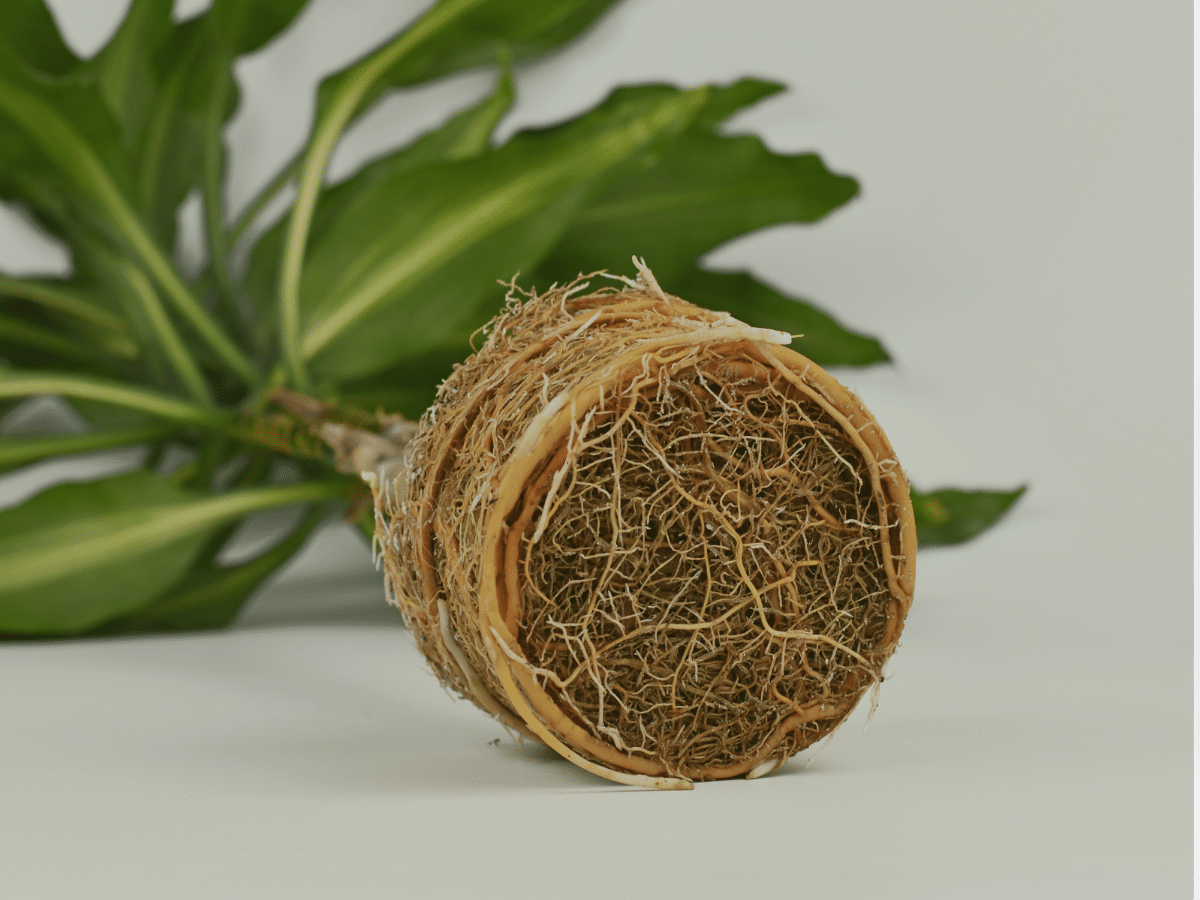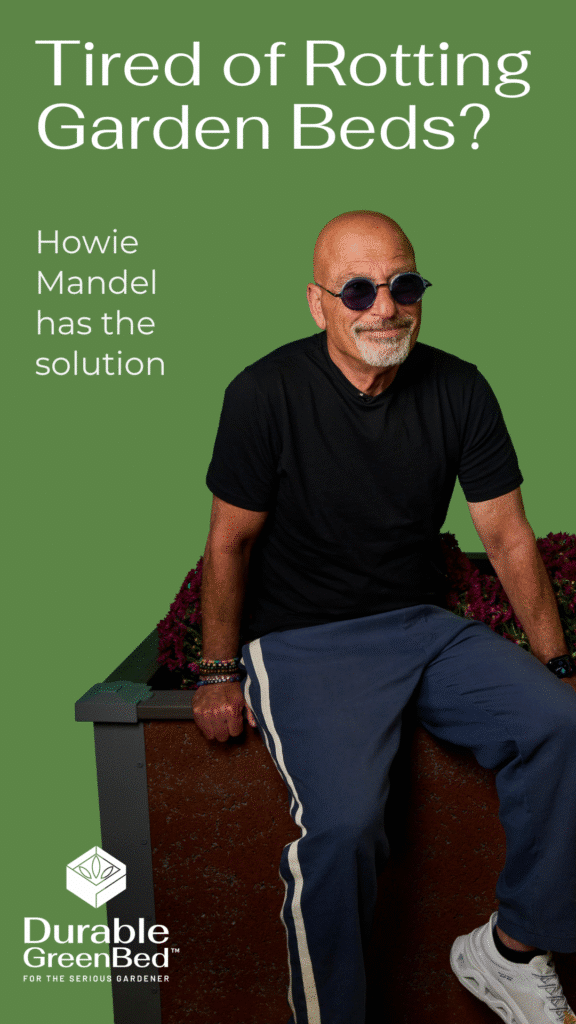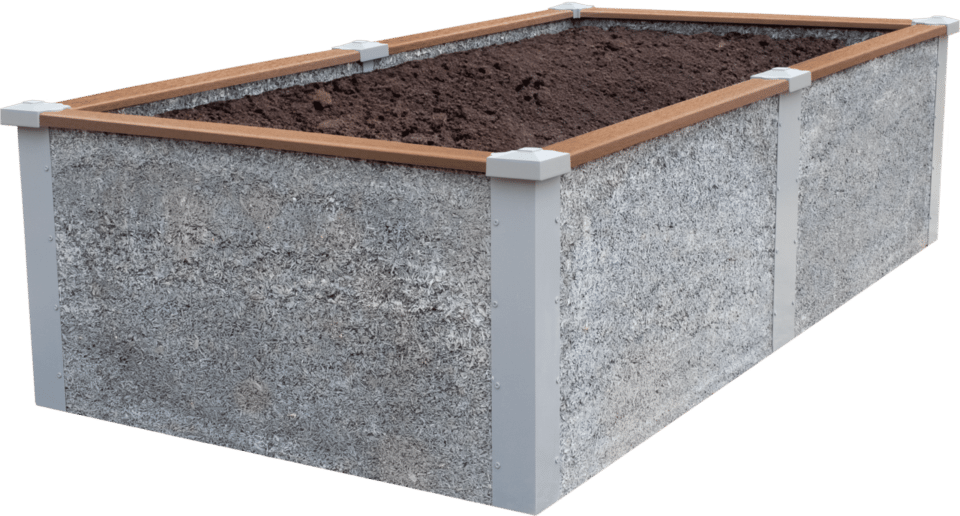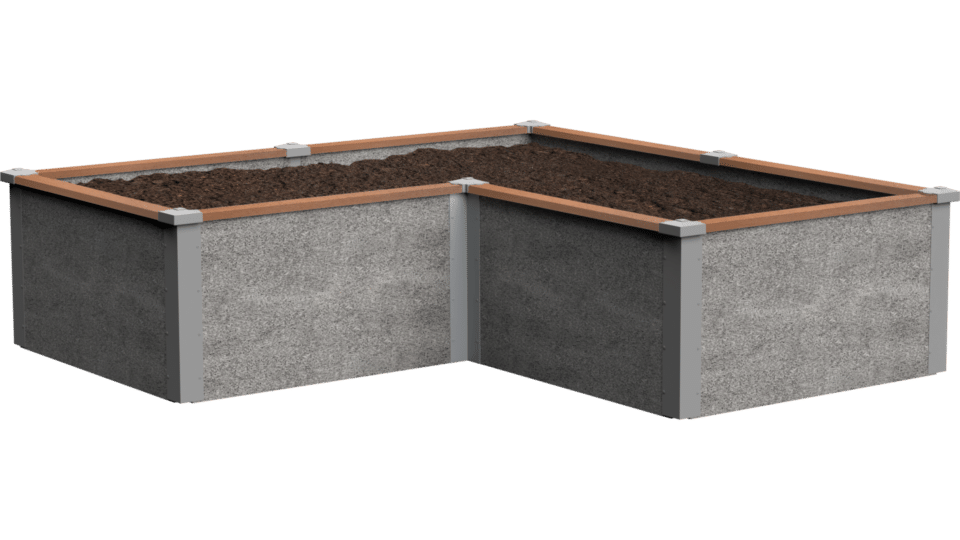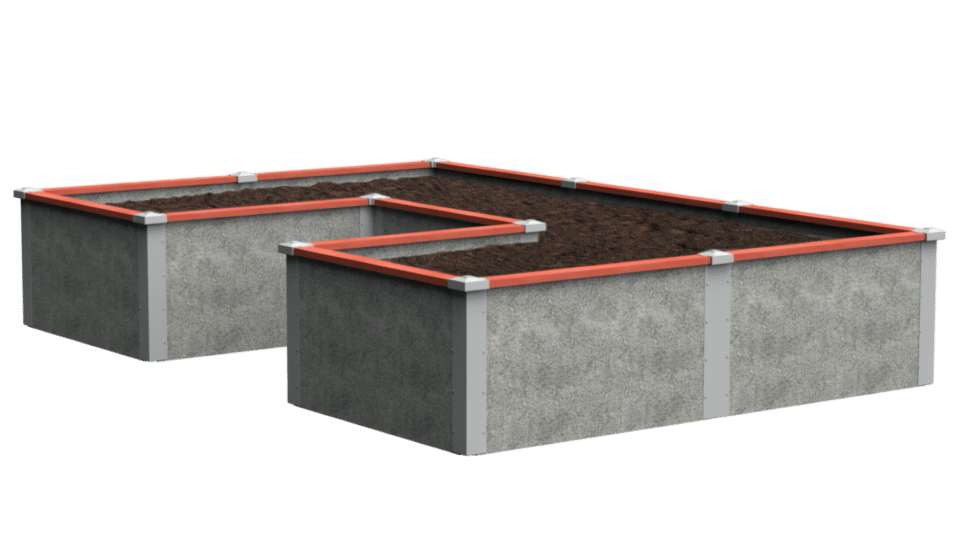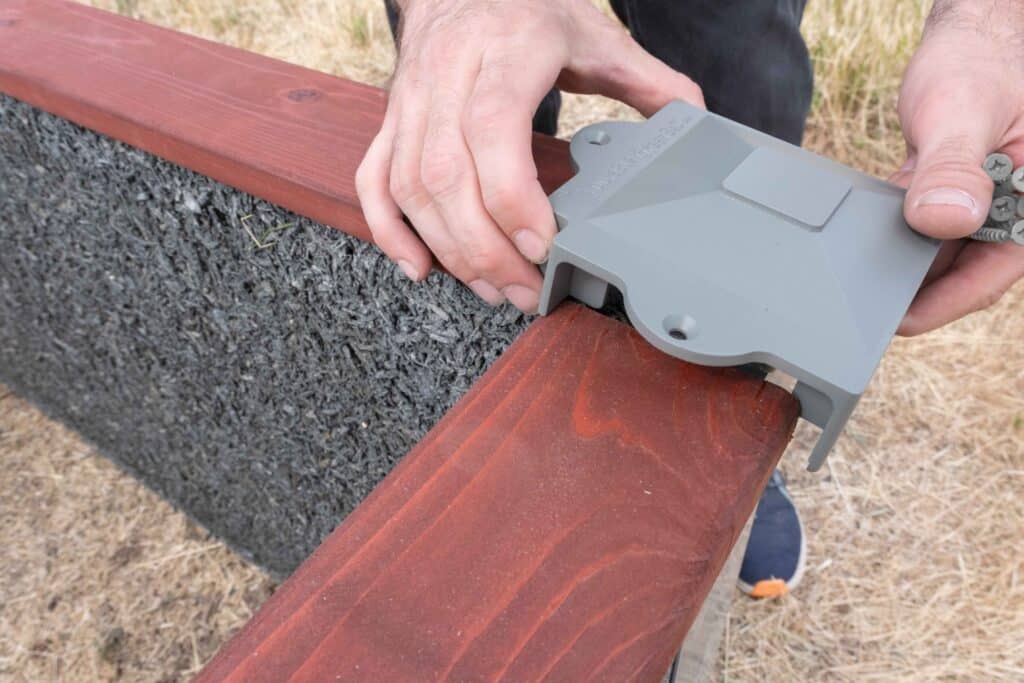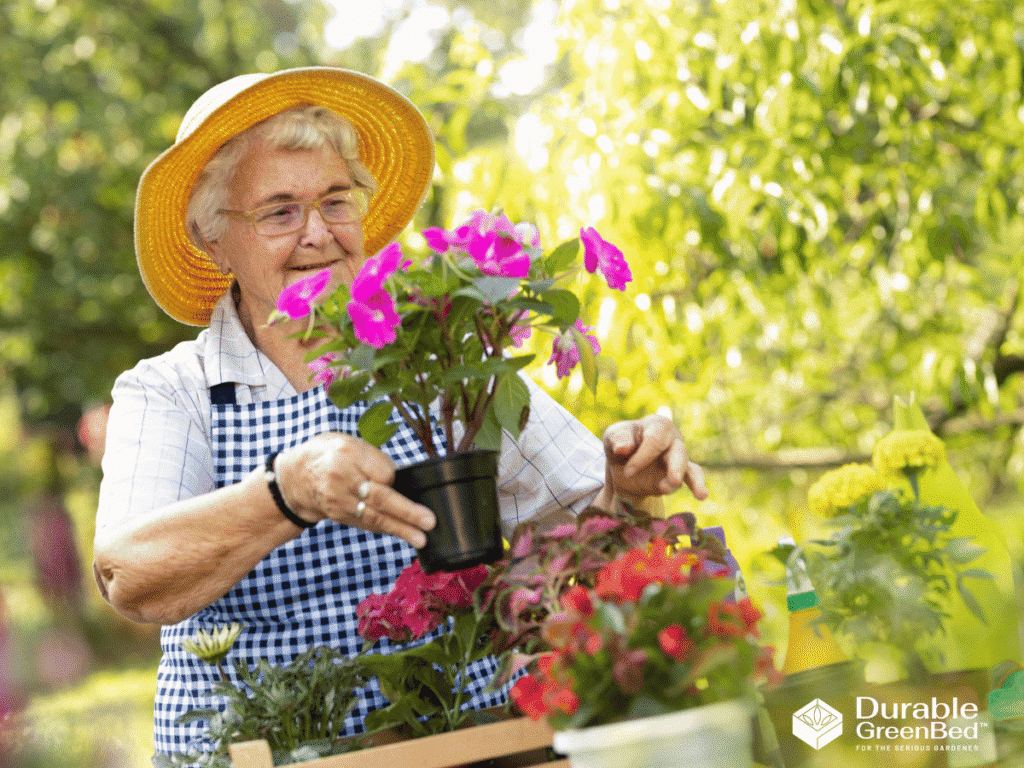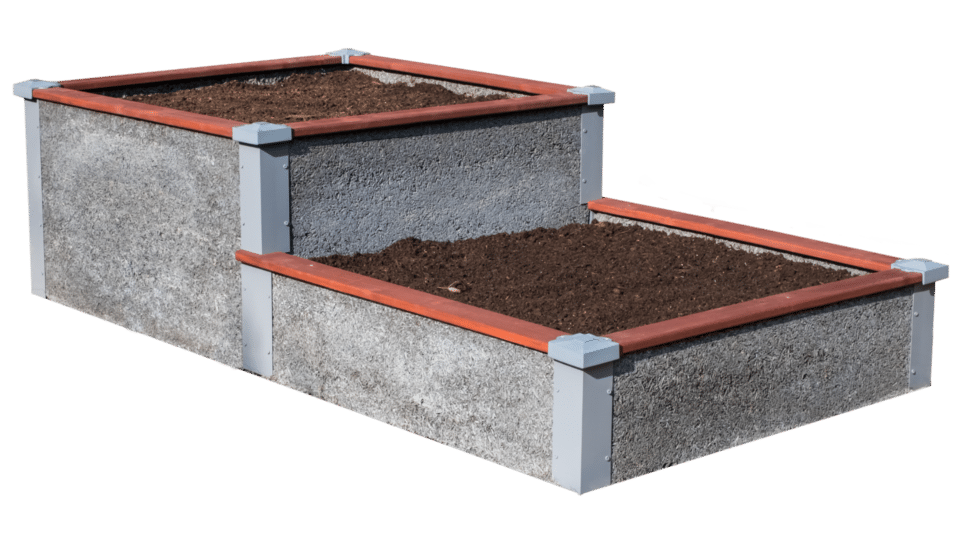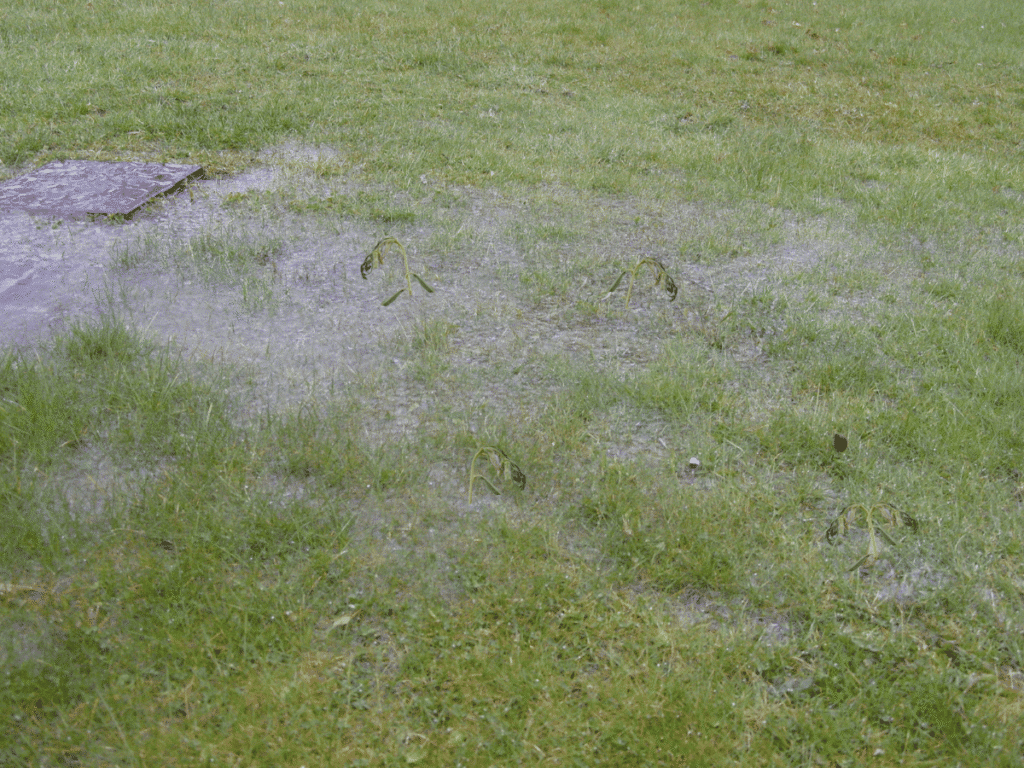
Have you ever had a plant die despite your best efforts? If you have, don’t worry; you are in good company. Many gardeners have experienced this frustrating event and learned a hard lesson about the issues caused by root-binding. But what exactly does it mean for a plant to be root-bound, and is root-bound bad for your plants? Understanding what it means for a plant to be root-bound is key to helping your plants thrive, whether in containers or raised beds. In this article, we’ll explore what root-bound means, the symptoms to watch for, how to fix root-bound plants, and how raised garden beds can influence root health.
What is Root-Bound? What Does It Mean for a Plant to Be Root Bound?
When a plant’s roots outgrow the space (container, pot, garden bed, etc.) they’re planted in, they are considered root-bound (also known as pot-bound). Normally, a plant’s roots would spread out freely; however, when a plant runs out of space, the roots begin to circle the edges of the pot or become tightly packed, forming a dense root ball. When this occurs, the crowding restricts the root’s ability to absorb nutrients and water, leading to problems for the plant. Determining if a plant is root-bound only requires a visual inspection of the roots. Simply gently remove the plant from its pot. If you see a thick mat of roots tightly coiled with little visible soil, you have a root-bound plant.
Why Is Being Root-Bound Bad for Plants?
Is root-bound bad? Almost always, yes. When roots become tangled and compacted, your plants can experience numerous problems, including:
- Stunted Growth: The roots provide nutrients and stability to the plant; if they are unable to expand, so is the rest of the plant.
- Nutrient Deficiencies: Root binding not only limits the plant’s ability to take up nutrients, but it also probably means that there is less soil in the container, meaning that there are fewer available nutrients for the plant to absorb.
- Wilting despite watering: Root-bound plants have a reduced ability to absorb water, leaving them with less water than they need, despite your best efforts.
- Soil being hydrophobic or drying out too quickly: Because the roots are taking up most of the space in the pot, the water drains or evaporates more quickly than normal
- Increased chance of root rot: Simply put, dense roots are at greater risk of decay
Ultimately, root-bound plants become stressed and less resilient, which is why it’s important to address this issue promptly. Another issue that can occur with root-bound plants is pot breakage. The dense roots put pressure on the pot and can lead to cracking or breaking.
Root-Bound Plants: Symptoms to Watch For
How do you know if your plant is root-bound? Watch for these symptoms:
- Roots growing out of drainage holes or on the soil surface
- Soil that dries out extremely fast
- Wilting or drooping leaves even after watering
- Yellowing or browning leaf edges
- Cracked or bulging pots
- Slowed or stunted new growth
Regularly checking your plants’ root health helps you catch root binding early before the symptoms worsen.
How to Fix Root-Bound Plants
To fix a root-bound plant, follow these steps:
- Gain Access to the Roots: Remove the plant carefully from its container.
- Visual Inspection: Inspect the root ball for tight, circling roots.
- Detangle: Use your fingers or a fork to gently loosen and tease apart the roots.
- Root-Bound Plants and Root Pruning: When necessary, prune roots by trimming up to one-third of the root mass—focus on tangled or damaged roots.
- Find the Plant a New Home: Repot into a larger container than the old one with fresh, well-draining soil.
- Water and Rest: Water the plant thoroughly and place it in a shaded, low-stress environment for a few days to recover.
With proper care, root-bound plants often bounce back and grow stronger.
Can Raised Garden Beds Cause Root Binding?
The short answer is yes. Root-binding can still happen in raised beds, especially when the beds are placed near a tree (tree roots can invade from below), the soil is too shallow or compacted, or the raised bed has a closed bottom with limited drainage. Fortunately, there are steps you can take to prevent your plants from becoming root-bound in a raised garden bed. Preventative strategies include:
- Use deep beds with at least 12–18″ of quality soil.
- Avoid placing beds near large trees with aggressive root systems.
- Consider using a root barrier or hardware cloth at the base
- Planting in a breathable bed designed for plant growth, like a Durable GreenBed
Why Durable GreenBed Raised Beds Help Prevent Root Binding
Unlike many traditional raised garden beds, Durable GreenBed’s raised beds are specially designed to help prevent plants from becoming root-bound. Their breathable, mineral-based composite walls allow for superior air circulation to the root zone, encouraging healthier, more outward root growth rather than circling or compacting. Additionally, the open-bottom design allows roots to naturally expand downward into native soil, giving plants the space they need to grow freely. This thoughtful design helps prevent the common pitfalls of root restriction seen in raised beds with enclosed or impermeable bases, making Durable GreenBed a smart, long-term solution for healthier root systems and more productive gardens.
How Far Away from the Wall Do I Plant in a Raised Bed?
After all of this talk about plants becoming root-bound, you might be nervous about planting too close to a wall and dooming your plants from the get-go. Don’t worry, we can help. If you find yourself asking, “How far away from the wall do I plant in a raised bed?” the general rule is to plant at half of the remaining spacing from the wall. Therefore, if the spacing is 12”, your plant should be approximately 6” from the wall. While I have broken out the ruler before to make sure my plants had optimal spacing, I can safely say that precise measurements are unnecessary. While you should attempt to properly space your plants, eyeballing the distance and being off by a bit either way is not going to doom your plants to being root-bound forever.
Additional Factors to Consider
Additionally, you may want to consider some other factors when deciding how closely you want to plant your plants to the wall. For instance, you should consider wall heat retention and access to sunlight. Consider, if you are planting in a metal bed that gets a lot of sunlight, your walls may heat up quickly in the summer, or a bed that is often in the shade may get too cold in the cooler months. If you don’t want to fry or freeze your roots, you may want to give your plants some insulation from the elements and keep them farther away from the walls. Access to airflow and proper drainage are other factors you should consider when deciding where to plant in your garden bed. While Durable GreenBeds are designed for optimum airflow to roots and natural drainage with their permeable walls, most other raised beds are not. Planting too close to a wall could stifle your root aeration or result in root rot from a lack of drainage.
Finally, you should consider accessibility. You are going to need to be able to access your plants and the areas around them if you are going to maintain your garden and harvest any delicious fruits or vegetables that may grow. Make sure your plants are planted far enough away from obstructions that you can easily access them. Trust me, you’ll thank me during the weeding and harvesting seasons.
Quick Answers to Common Questions:
Can I cut roots on a root-bound plant?
Yes, sometimes trimming the roots is the best way to save the plant. Just make sure you don’t cut more than one-third of the roots.
Can root-bound plants recover?
Absolutely! With a little tender love and care, your root-bound plant can not only recover, it can thrive.
What are the best plants for containers that don’t get root-bound quickly?
Low-maintenance plants like cacti and succulents usually do well in pots, especially if you are new to the whole ‘watering on a regular basis’ thing. Other indoor plants like pothos and philodendron also tend to do well as plants for new gardeners.
So, is Root Bound Bad? Are My Plants Doomed?
Yes, being root-bound is a common but serious issue that can stunt your plants and reduce their health if ignored. But understanding the signs, learning how to fix root-bound plants, and how to preventing root binding with smart garden design can make all the difference. Raised beds, especially thoughtfully designed ones like Durable GreenBed’s breathable, open-bottom system, can give your plants the room they need to flourish.
Take a moment to check your plants today—are any root-bound? And if you’re ready for a raised bed upgrade, Durable GreenBed might be the perfect solution for healthier roots and bigger harvests.
There's Nothing Like Durable GreenBeds
It's the Walls!™
- Breathable
- Well Draining
- Higher Yields
- Prevents Slugs and Pests
- Non-Toxic
- 20-25 Year Lifespan
Shop Durable GreenBed Kits
-
Rectangular Raised Garden Bed Kit
$471.00 – $2,085.00Price range: $471.00 through $2,085.00 Select options This product has multiple variants. The options may be chosen on the product page -
L-Shaped Raised Garden Bed Kit
$786.00 – $1,305.00Price range: $786.00 through $1,305.00 Select options This product has multiple variants. The options may be chosen on the product page -
U-Shaped Raised Garden Bed Kit
$1,199.00 – $2,446.00Price range: $1,199.00 through $2,446.00 Select options This product has multiple variants. The options may be chosen on the product page
Shop Durable GreenBed Raised Garden Bed kits
-
Rectangular Raised Garden Bed Kit
$471.00 – $2,085.00Price range: $471.00 through $2,085.00 Select options This product has multiple variants. The options may be chosen on the product page -
L-Shaped Raised Garden Bed Kit
$786.00 – $1,305.00Price range: $786.00 through $1,305.00 Select options This product has multiple variants. The options may be chosen on the product page -
4’x8’ Stepped Raised Garden Bed Kit
$865.00 – $1,073.00Price range: $865.00 through $1,073.00 Select options This product has multiple variants. The options may be chosen on the product page -
U-Shaped Raised Garden Bed Kit
$1,199.00 – $2,446.00Price range: $1,199.00 through $2,446.00 Select options This product has multiple variants. The options may be chosen on the product page

